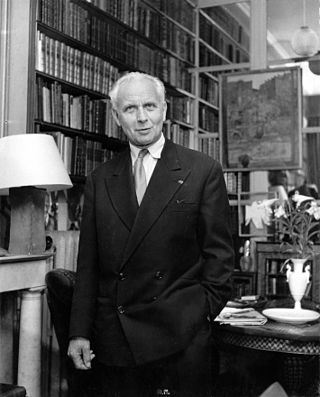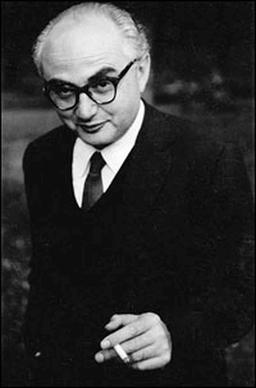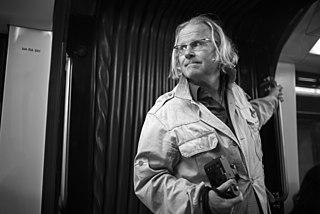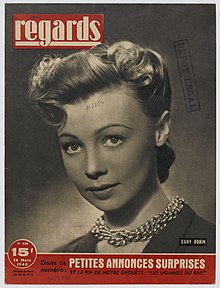
Henri Barbusse was a French novelist, short story writer, journalist, poet and political activist. He began his literary career in the 1890s as a Symbolist poet and continued as a neo-Naturalist novelist; in 1916, he published Under Fire, a novel about the World War I based on his experience which is described as one of the earliest works of the Lost Generation movement or as the work which started it; the novel had a major impact on the later writers of the movement, namely on Ernest Hemingway and Erich Maria Remarque. Barbusse is considered as one of the important French writers of 1910–1939 who mingled the war memories with moral and political meditations.

Louis Aragon was a French poet who was one of the leading voices of the surrealist movement in France. He co-founded with André Breton and Philippe Soupault the surrealist review Littérature. He was also a novelist and editor, a long-time member of the Communist Party and a member of the Académie Goncourt. After 1959, he was a frequent nominee for the Nobel Prize in Literature.

Robert Capa was a Hungarian–American war photographer and photojournalist. He is considered by some to be the greatest combat and adventure photographer in history.

Photojournalism is journalism that uses images to tell a news story. It usually only refers to still images, but can also refer to video used in broadcast journalism. Photojournalism is distinguished from other close branches of photography by having a rigid ethical framework which demands an honest but impartial approach that tells a story in strictly journalistic terms. Photojournalists contribute to the news media, and help communities connect with one other. They must be well-informed and knowledgeable, and are able to deliver news in a creative manner that is both informative and entertaining.

David Seymour, or Chim, was a Polish photographer and photojournalist.

Henri Lefebvre was a French Marxist philosopher and sociologist, best known for pioneering the critique of everyday life, for introducing the concepts of the right to the city and the production of social space, and for his work on dialectical materialism, alienation, and criticism of Stalinism, existentialism, and structuralism. In his prolific career, Lefebvre wrote more than sixty books and three hundred articles. He founded or took part in the founding of several intellectual and academic journals such as Philosophies, La Revue Marxiste, Arguments, Socialisme ou Barbarie, Espaces et Sociétés.

Paris Match is a French-language weekly news magazine. It covers major national and international news along with celebrity lifestyle features. Paris Match has been considered "one of the world's best outlets for photojournalism". Its content quality was compared to the American magazine Life. Paris Match's original slogan was "The weight of words, the shock of photos", which was changed to "Life is a true story" in 2008. Long coveted by Bernard Arnault, the magazine is owned by Vincent Bolloré.
La Cagoule was a French fascist-leaning and anti-communist terrorist group that used violence to promote its activities, in the final years of the Third Republic and into the Vichy Regime.

Martine Franck was a British-Belgian documentary and portrait photographer. She was a member of Magnum Photos for over 32 years. Franck was the second wife of Henri Cartier-Bresson and co-founder and president of the Henri Cartier-Bresson Foundation.
Documentary photography usually refers to a popular form of photography used to chronicle events or environments both significant and relevant to history and historical events as well as everyday life. It is typically undertaken as professional photojournalism, or real life reportage, but it may also be an amateur, artistic, or academic pursuit.

Gerta Pohorylle, known professionally as Gerda Taro, was a German war photographer active during the Spanish Civil War. She is regarded as the first woman photojournalist to have died while covering the frontline in a war.

Henri Guilbeaux (1885–1938) was a French socialist politician and poet. He was active in the Zimmerwald Anti-War Movement during World War I.

Charles Gide was a French economist and historian of economic thought. He was a professor at the University of Bordeaux, at Montpellier, at Université de Paris and finally at Collège de France. His nephew was the author André Gide.

The École supérieure de journalisme is an institution of higher education in Paris dedicated to journalism and related studies. Its origin was in the Collège Libre des Sciences Sociales founded in 1895 by Dick May, and other supporters during the Dreyfus Affair. It was made a separate Grande École in 1899 and claims the title of the "world's first school of journalism". Intended to give students a broad knowledge of politics and economics, it did not award a separate journalism degree by name until 1910.

Peter N. Turnley is an American and French photographer known for documenting the human condition and current events. He is also a street photographer who has lived in and photographed Paris since 1978.
Folks-Sztyme, or People's Voice in English, was a bilingual magazine published in Polish and Yiddish in Communist Poland between 1946 and 1991.

The Left in France The distinction between left and right wings in politics derives from the seating arrangements which began during the Assemblee Nationale in 1789. During the 1800s, left largely meant support for the Republic, whereas right largely meant support for the monarchy. In the 1900s,
Walter Reuter was a Mexican photojournalist of German origin. Reuter arrived to Mexico in 1942, after fleeing the rise of the Nazis in Germany, and the defeat of the Republicans in Spain. Having started his career in Europe, he introduced modern photojournalism techniques into Mexico and is best known for his work documenting twenty ethnicities of Mexico's indigenous people. In 1986, the Museo de Arte Moderno held a retrospective of his work and he was a member of the Salón de la Plástica Mexicana. Since his death, a collection of his work has been published and exhibited.

Henri Martin was a political activist of the French Communist Party and former sailor famous for the political-military scandal called the Henri Martin affair, in which the government of the French Fourth Republic meted out a five-year prison sentence to him for distributing pamphlets in opposition to the First Indochina War. He was born in Lunery, Cher and died in Pantin.
Humanist Photography, also known as the School of Humanist Photography, manifests the Enlightenment philosophical system in social documentary practice based on a perception of social change. It emerged in the mid-twentieth-century and is associated most strongly with Europe, particularly France, where the upheavals of the two world wars originated, though it was a worldwide movement. It can be distinguished from photojournalism, with which it forms a sub-class of reportage, as it is concerned more broadly with everyday human experience, to witness mannerisms and customs, than with newsworthy events, though practitioners are conscious of conveying particular conditions and social trends, often, but not exclusively, concentrating on the underclasses or those disadvantaged by conflict, economic hardship or prejudice. Humanist photography "affirms the idea of a universal underlying human nature". Jean Claude Gautrand describes humanist photography as:
a lyrical trend, warm, fervent, and responsive to the sufferings of humanity [which] began to assert itself during the 1950s in Europe, particularly in France ... photographers dreamed of a world of mutual succour and compassion, encapsulated ideally in a solicitous vision.















